- March 29, 2024
As product designers and manufacturers, both of us are always looking for ways to speed up the manufacturing process and make it easier and cheaper. This is where DfM comes in.
Design for Manufacturing (DFM) is one of the most critical aspects of product development. It is the important connecting link between conceptual design and manufacturing and can have a massive impact on a product’s performance and cost.
This article addresses a common question: What is DFM? To provide a comprehensive answer, we will take a deep dive into design for manufacturing principles and DFM analysis. Moreover, we will highlight some core skills you should have to be a DFM expert and hope to provide tips for implementing them into your product development cycle.
What is DFM (Design for Manufacturing)?
Design for manufacturing, or DFM as it is commonly abbreviated, is a core engineering concept that involves all activities that focus on making an idea into a practical, operational product. It takes engineering analysis, financial management, and a deep understanding of the market to go from a prototype to production.
We will discuss its various aspects in a while, but the basic definition is exactly as above.
In most cases, product development begins with a vague idea with no practical limitations. It may be impossible to manufacture due to several reasons like high costs, design complexity, material unavailability, etc. DFM analysis looks at product development from these angles and adds credibility to the product designers’ ideas and investors’ stakes.
Key Objectives of DFM
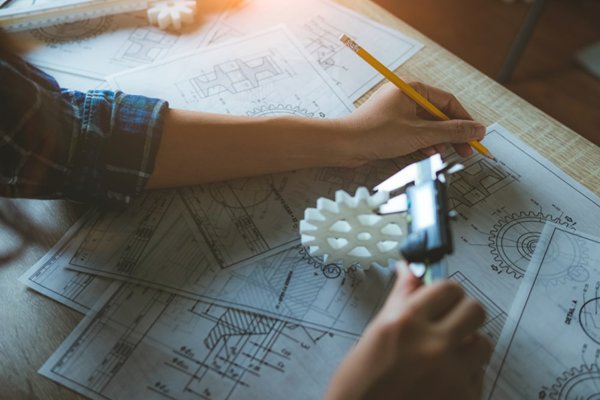
Design for manufacturability is a wide-ranging methodology that branches into multiple areas of the product development lifecycle. Therefore, it is important to understand its main goals to provide DFM engineers with a clear framework to work within.
This section explores the key objectives of DFM analysis from a business perspective.
Cost
As with any project, the first and foremost concern is its financial impact. The core purpose of design for manufacturing is to minimize the production cost of a design as much as possible. This includes costs like raw materials, manufacturing, energy, and labor.
DFM ensures the financial viability of the product development process and guarantees healthy returns on investment.
Quality
Another objective of design for manufacturing is to maximize the quality of the product. This is, of course, done within the bounds of limitations like budget, material options, and the target markets.
High-quality products carry more appeal among consumers, build brand image, and generally lead to a better performance of the product in the market. Consequently, this also opens up new avenues for market expansion and company growth.
Sustainability
Waste minimization is among the top priorities of DFM engineers. A central element of DFM analysis is to identify all areas of waste and optimize the process to eliminate as much of it as possible.
This goal is set to ensure that the production is in line with modern sustainability goals stemming from environmental concerns and over-consumption of limited sources. Furthermore, it is also another way of minimizing costs.
Principles of Design for Manufacturing
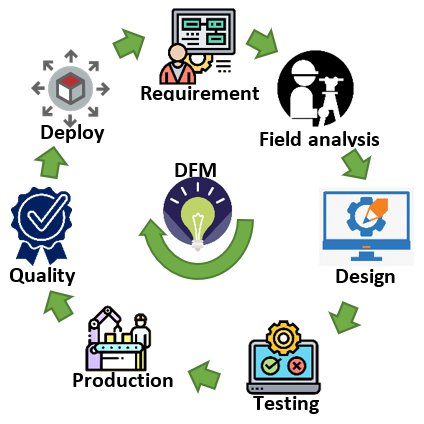
Now that we have a high-level overview of design for manufacturing, let us get into the nitty-gritty details of it from an engineering point of view.
With the key objectives of cost reduction, quality enhancement, and sustainable waste reduction in mind, engineers look to improve the following five areas of a manufacturing process during DFM analysis.
Process
The process includes all physical manufacturing operations. There is a multitude of manufacturing processes companies use, like CNC machining, injection molding, 3D printing, electro-discharge machining, etc. The list can go on…
The job of design for manufacturability experts is to find ways to optimize these processes. At first, they look at the design and see if the design engineers have made the right process selection.
For example, an electronics enclosure can be manufactured using multiple techniques including machining, injection molding, and 3D printing. The DFM experts weigh the pros and cons of each process in light of the design and suggest the most viable one to the design and production teams.
Moreover, there are multiple process parameters within each manufacturing technique. For example, CNC machining has parameters like cutting speed, feed, and depth of cut that can be tuned to an optimal setting to achieve high productivity and quality. DFM analysis aims to find a suitable machining strategy.
Design
Design optimization is among the top designs for manufacturing principles. Due to the free-flowing nature of product design during the idea development phase, there are always some unattended aspects of designs from a manufacturability perspective that need to be addressed before the design can go into production.
During DFM analysis, engineers identify all such issues and come up with solutions for them. In most cases, it is limited to small tweaks in the design here and there. For example, in DFM for CNC machining, the suggestions can include adding fillets to sharp internal corners (see figure below) to accommodate cutting tool radius.
In rare cases, major design changes might be suggested to the design engineering team, which then requires collaborative work between both teams to come up with the best solution. This can happen when DFM teams use methods like topology optimization to suggest weight reduction or a change in the preferred manufacturing technique.
Engineering design is an iterative process and it is expected to experience some back and forth between design and production.
Materials
Another area that design for manufacturing explores is materials. There is a huge variety of materials available for manufacturing products, creating a strong opportunity to optimize material selection.
Let us go back to our enclosure example. Enclosures can be made out of metal, plastics, polymers, and even composites. However, only one of these is the best-suited choice. DFM analysis compares each material against the product’s functional requirements and suggests the best one.
For example, if the enclosure is meant for low-cost electronics, a simple plastic enclosure will do. Choosing an expensive and hard-to-manufacture metal will be over-engineering. Similarly, if it is meant to protect an expensive, high-quality item against shock loads, composites might be the go-to choice.
Moreover, material selection is much more than about part functionality alone. DFM engineers need to consider material availability and costs as well. Additionally, some materials have a negative environmental impact and can contribute to violations of carbon footprint goals.
Environment
The working environment of the product plays an important role in the DFM process. The environment consists of characteristics like mechanical loads (static and dynamic), temperature, humidity, chemical exposure, and electric/magnetic interference.
The conceptual design may not always be capable of withstanding such environmental conditions. Therefore, DFM engineers apply design for manufacturing principles to sort out such problems.
The solutions can include dimensional changes like extra wall thickness to accommodate mechanical loads. They may suggest a different material due to its better thermal stability. In other cases, a specific surface coating may be added to the manufacturing process to protect the part against chemical exposure.
Compliance/Testing
Most products fall under certain regulatory constraints and standards. These standards may be industrial, internal, or even governmental. Design for manufacturability engineers ensure that the part design and manufacturing process comply with such standards.
How does Design for Manufacturing Aim to Achieve its Objectives?
It is clear from the discussion above that design for manufacturing is a very goal-oriented approach and it encompasses multiple objectives. Achieving all of these, while also balancing them against project limitations, is a complex problem.
The following are some of the practical ways DFM experts aim to achieve their targets.
Minimize the Number of Parts
The number of components in a mechanical assembly can be minimized for simplicity, cost reduction, and less waste. While this may not always be possible, DFM analysis always focuses on identifying and eliminating redundant parts through careful analysis.
Use Standardized Parts
Design for manufacturability also focuses on using as many standardized parts as possible. Standardized components can be fasteners (nuts, bolts), sealing devices (o-rings, gaskets), and motion mechanisms (lead screws), each of which is easily available directly off the shelf.
This reduces production workload, focuses manufacturing effort on non-standardized parts, and reduces costs.
Modular Design
The use of modular designs is another technique widely adapted by DFM engineers. A modular design means that the product assembly is divided into different sub-assemblies (modules) that can easily be changed without affecting the design of other modules.
This approach makes product upgrades during the prototype development phase very easy to achieve. Moreover, it puts the entire design process in a more systematic framework where design engineers can conveniently pinpoint exact modules to work on without concern for overall functionality.
Ease of Assembly
Finally, a crucial target in design for manufacturability is to make the product assembly as easy and quick as possible. The design should be viewed from the lens of assembly/disassembly, and DFM engineers make sure that the effort going into these activities is minimal so time and money are saved.
What Does it Take to Become a DFM Expert?
This article discusses various aspects of design for manufacturing and places a lot of emphasis on the role of DFM analysis experts in achieving its goals.
This section briefly introduces our readers to some of the core skills they can learn to be DFM professionals.
Advanced Simulation and Modelling
Simulation and CAD modeling software are widely utilized in DFM analysis. They allow engineers to ascertain whether the design is capable of withstanding its environmental conditions and are instrumental in changing the design according to manufacturing requirements.
Collaborative Design
Design for manufacturing is a collaborative effort between designers, product developers, and manufacturing specialists. Modern companies promote such teamwork through onsite and online collaborative design activities, which include learning the use of tools such as cloud-based technologies and whiteboards.
Design for Manufacturing vs. Design for Assembly
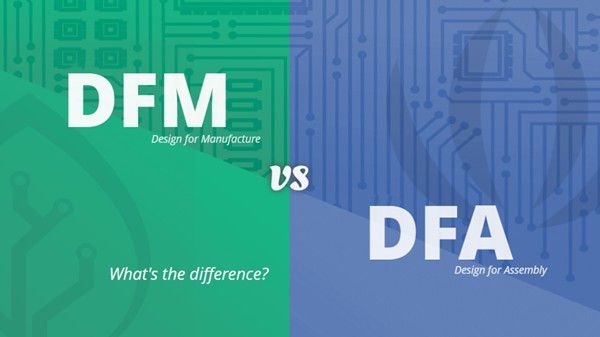
Design for manufacturing vs design for assembly is an important distinction to make for engineers working in this field. While the differences are subtle, it is good to be aware of them as these two techniques diverge quite a bit when you look at the details.
Let us take a brief look at some of the main differences between these.
Parts vs Assemblies: As the name suggests, design for assembly analysis is concerned with various components in a mechanical assembly, while the design for manufacture focuses specifically on a single part.
Design vs Assembly: DFM analysis is more targeted towards design optimization and material selection. On the other hand, design for assembly puts more effort into streamlining the assembly process by adapting efficient assembly techniques.
Uses and Examples of DFM for Different Manufacturing Processes
There are numerous designs for manufacturing examples in industrial environments that can help us develop a better understanding of how it works in a practical environment. This section will go over a few of these to try to give you a flavor of design for manufacturability in practice.
1. CNC Machining
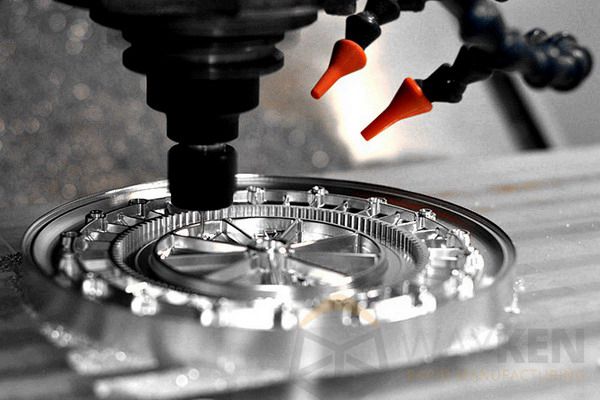
CNC machining is one of the most common manufacturing techniques for DFM analysis. There are various opportunities to achieve design for manufacturing targets. The main ones are as follows:
- Sharp Internal Corners: Designers make this common mistake while designing internal slot/pocket features. The internal corners need to be rounded to accommodate the geometry of cutting tools, which is round.
- Wall Thickness: Some walls/floor features are oftentimes too thin to withstand cutting loads. This can lead to part breakage during machining. Hence, DFM engineers suggest thicker walls/floors when they get such geometries.
- Pocket Depth: Pocketing is a real test for tool rigidity. As a pocket gets deeper, the cutting tool vibrates more vigorously, leading to a bad surface finish and tool failure. Thus, DFM analysis often leads to alterations in the geometry of very deep pockets.
- Tolerancing: It is common to see design tolerances being changed during DFM. Since tolerances are expensive to maintain, DFM professionals often loosen up non-critical tolerances to save time and money.
2. 3D Printing
3D printing is another area that requires the attention of DFM engineers before designs go to production.
- Supports: Certain overhanging features in 3D printing designs are too weak and tend to fall down due to gravity during the printing process. A common DFM solution to this problem is using supportive scaffolds beneath such features. Later on, the operator removes these scaffolds.
- Wall Thickness: This issue is similar to thin walls in CNC machining. Very thin walls are often not printable as they are too fragile and break apart during the print. Thus, design for manufacturing suggests thicker walls in some designs.
3. Injection Molding
Finally, let us discuss the applications of design for manufacturing in the context of injection molding.
- Undercuts: Many injection molding designs have undercut features. Sometimes, these are not feasible to produce as they hinder the tool’s motion, or there are cheaper alternatives to achieve similar geometries. DFM professionals are responsible for pointing this out and proposing viable solutions.
- Draft Angles: Mold ejection is an important part of the injection molding process. It needs to be smooth and quick, and should not damage the part and die. To maximize its efficiency, engineers often add a small draft to the design during DFM analysis to facilitate easy ejection.
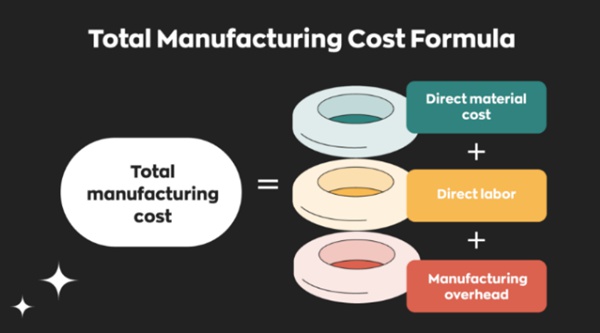
Get DFM For Your Project At WayKen
DFM will have all the stakeholders involved in product development come together and solve problems directly related to the product design, its processes, and the manufacturing process. This ensures a smooth transition of the product from design to assembly up to the mass production level.
Design for Manufacturing is a process that helps you get the best results. At WayKen, we are expert in CNC machining, vacuum casting, and 3d printing. For each project, we conduct a DFM review to ensure that your prototypes and parts are produced in the best and most cost effective way. Contact us today!
Conclusion
This concludes our discussion on design for manufacturing. It is a very broad engineering analysis with a variety of key objectives, tools, and applications. In the era of rapid prototyping, it has become an essential tool to assess manufacturability of product designs.
FAQs
Who is responsible for DFM?
In a manufacturing company, DFM engineers are responsible for DFM analyses. They work with the design and production teams to fill the gap between conceptual design and manufacturing.
How long does DFM take?
A DFM project can take an average of 1-5 days to complete. It may be more or less depending upon the complexity of the design and DFM analysis.
When should DFM be implemented in the product development process?
DFM should be implemented parallel to the design process. A preliminary analysis should be performed once the conceptual design takes some shape to judge its base feasibility. Then, as the design iterations progress, the DFM team should provide their input, until they perform a final, in-depth DFM study on the finalized design before it moves to production.





